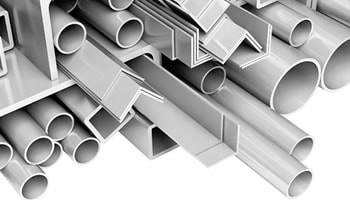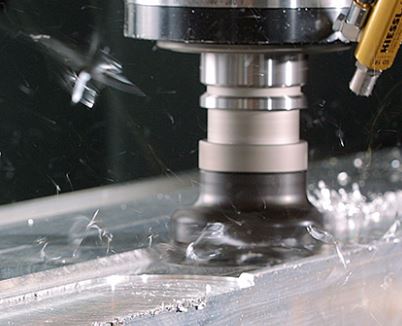High Strength Aluminum Alloys

Aerospace Aluminum tube in 2024, 6061 and 7075
The common U.S. heat-treatable alloys used by the aerospace industry as extrusion include 2014, 2219, 2024, 6061, 7075, 7050, 7150 and 7178. The 2XXX alloy series has copper as its main element; 6XXX has magnesium and silicon and 7XXX series has zinc.
Mill and Aircraft Extrusion test reports display chemical and mechanical information as standard, include order information for domestic and international orders.
Form more information contact our sales team. Or call sales at 323-813-4105
Information on Hard Alloy Tempers.
Aircraft Extrusion Co is specializes in hard alloy profiles and tube. Unlike commercial alloys, it is important to understand the different types of alloys and the temper designations. Providing just the part numbers results in delays, part numbers must always be accompanied by the alloy and temper. There are a few exceptions, like Lockheed, where the alloy/temper is also called out on the part number and print.
Bending and Fabrication
 In addition to our wide range or aerospace tube, we also provide secondary processes including heat treatment, bending, forming and machine. Recent projects include handles, torque tubes hydraulic applications
In addition to our wide range or aerospace tube, we also provide secondary processes including heat treatment, bending, forming and machine. Recent projects include handles, torque tubes hydraulic applications
Aluminum Alloy Designations
The aluminum industry uses a four-digit index system for the designation of its wrought aluminum alloys.
As outlined below, the first digit indicates the alloy group according to the major alloying elements.
In this group, minimum aluminum content is 99%, and there is no major alloying element.
The second digit indicates modifications in impurity limits. If the second digit is zero, there is no special control on individual impurities. Digits 1 through 9, which are assigned consecutively as needed, indicate special control of one or more individual impurities.
The last two digits indicate specific minimum aluminum content. Although the absolute minimum aluminum content in this group is 99%, the minimum for certain grades is higher than 99%, and the last two digits represent the hundredths of a percent over 99.
Thus, 1030 would indicate 99.30% minimum aluminum, without special control on individual impurities. The designations 1130, 1230, 1330, etc., indicate the same purity with special control on one or more impurities. Likewise, 1100 indicates minimum aluminum content of 99.00% with individual impurity control.
Aircraft Extrusion Company manufactures and supplies aircraft extrusions to tolerance specification Fed-Std-245 and ANSI H 35.2. Call us if you have any question or concerns regarding mill tolerances. Copies of aluminum profile specifications can be found at visiting the Aluminum and Standards Federation bookstore
The major alloying elements are indicated by the first digit, as follows:
| Copper | Manganese | Silicon | Magnesium | Magnesium and Silicon | Zinc | Other Element | Unused Series |
|---|---|---|---|---|---|---|---|
| 2xxx | 3xxx | 4xxx | 5xxx | 6xxx | 7xxx | 8xxx | 9xxx |
- 2xxx . . . . . . . . . . . . . . . . . . . Copper
- 3xxx . . . . . . . . . . . . . . . . . . . Manganese
- 4xxx . . . . . . . . . . . . . . . . . . . Silicon
- 5xxx . . . . . . . . . . . . . . . . . . . Magnesium
- 6xxx . . . . . . . . . . . . . . . . . . . Magnesium and Silicon
- 7xxx . . . . . . . . . . . . . . . . . . . Zinc
- 8xxx . . . . . . . . . . . . . . . . . . . Other Element
- 9xxx . . . . . . . . . . . . . . . . . . . Unused Series
The second digit indicates alloy modification. If the second digit is zero, it indicates the original alloy; digits 1 through 9, which are assigned consecutively, indicate alloy modifications. The last two digits have no special significance, serving only to identify the different alloys in the group.
Experimental Alloys
Experimental alloys are designated according to the four-digit system, but they are prefixed by the letter X. The prefix is dropped when the alloy becomes standard. During development, and before they are designated as experimental, new alloys are identified by serial numbers assigned by their originators. Use of the serial number is discontinued when the X number is assigned.
Aluminum Temper Designations
The temper designation system used for all forms, except ingot, of aluminum and its alloys, is based on the sequence of basic treatments used to produce the various tempers.
The basic temper designation consists of a letter, and subdivisions of the basic temper are indicated by one or more digits following the letter.Basic Temper Designations
| F | O | H | W | T |
|---|---|---|---|---|
| As Fabricated. | Annealed. | Strain Hardened. | Solution Heat Treated. | Thermally Treated -- to produce a stable temper other than those listed. |
- F -- As Fabricated.
- O -- Annealed.
- H -- Strain Hardened.
- W -- Solution Heat Treated.
- T -- Thermally Treated -- to produce a stable temper other than those listed.
SUBDIVISIONS OF H TEMPER
| H1 | Strain hardened only. |
|---|---|
| H2 | Strain hardened, then partially annealed. |
| H3 | Strain hardened, then stabilized. |
- H1 -- Strain hardened only.
- H2 -- Strain hardened, then partially annealed.
- H3 -- Strain hardened, then stabilized.
The degree of strain hardening is indicated by a second digit following one of the above designations.
| 2 | 1/4 hard (tensile strength midway between 0 and 4). |
|---|---|
| 4 | 1/2 hard (tensile strength midway between 0 and 8). |
| 6 | 3/4 hard (tensile strength midway between 4 and 8). |
| 8 | full hard (tensile strength achieved by 75% cold reduction after anneal). |
| 9 | extra hard (minimum tensile 2.0 ksi higher than 8). |
- 2 -- 1/4 hard (tensile strength midway between 0 and 4).
- 4 -- 1/2 hard (tensile strength midway between 0 and 8).
- 6 -- 3/4 hard (tensile strength midway between 4 and 8).
- 8 -- full hard (tensile strength achieved by 75% cold reduction after anneal).
- 9 -- extra hard (minimum tensile 2.0 ksi higher than 8).
A third digit may be used to indicate a variation of a two digit number.
SUBDIVISIONS OF T TEMPER
| T1 | Cooled from an elevated temperature shaping process and naturally aged. |
|---|---|
| T2 | Annealed. |
| T3 | Solution heat treated and cold worked. |
| T4 | Solution heat treated and naturally aged. |
| T5 | Cooled from an elevated temperature shaping process and artificially aged. |
| T6 | Solution heat treated and artificially aged. |
| T7 | Solution heat treated and stabilized. |
| T8 | Solution heat treated, cold worked, and artificially aged. |
| T9 | Solution heat treated, artificially aged, and cold worked. |
| T10 | Cooled from an elevated temperature shaping process, artificially aged and cold worked. |
- T1 -- Cooled from an elevated temperature shaping process and naturally aged.
- T2 -- Annealed.
- T3 -- Solution heat treated and cold worked.
- T4 -- Solution heat treated and naturally aged.
- T5 -- Cooled from an elevated temperature shaping process and artificially aged.
- T6 -- Solution heat treated and artificially aged.
- T7 -- Solution heat treated and stabilized.
- T8 -- Solution heat treated, cold worked, and artificially aged.
- T9 -- Solution heat treated, artificially aged, and cold worked.
- T10 -- Cooled from an elevated temperature shaping process, artificially aged and cold worked.
Additional digits are used to designate stress relieving:
| T51 | Stress relieving by stretching. |
|---|---|
| T52 | Stress relieving by compressing. |
- T51 -- Stress relieving by stretching.
- T52 -- Stress relieving by compressing.
T510 designates products that receive no further straightening after stretching, and T511 designates products that receive minor straightening in order to comply with standard tolerances.
